Rishad Tobaccowala's Blog, page 26
March 7, 2021
The Turd on the Table

Illustration by Iker Ayestaran
Most successful companies and individuals defeat themselves.
This comes from some combination of hubris, incestuous thinking and improperly aligned incentives.
Intel was so deluded by its success around Windows computing and 86 architecture that they missed mobile computing and were late to the needs of Cloud computing. It has been superseded by Nvidia, Taiwan Semiconductor and AMD. And yet another CEO has come and gone.
Wells Fargo was so crazed and incentivized to drive revenue by opening new accounts that they started accounts for dead people and established multiple accounts for customers who did not need them. Billions of dollars of fines and 4 CEO changes in less than 6 years is a result of this besotted behavior.
Soon a trail of emails will show that Boeing for years was aware of the software problems with the 737Max but a zeal to ship, a disconnected or badly informed Board of Directors, and miscommunication deeply damaged this world class firm.
Massive growth leading to a dilution of talent and difficulties in maintaining standards, a lust for lucre combined with deep divides between values of senior partners and a new generation of purpose driven talent as well as wedge between US and European and Asian leadership has badly impacted the reputation of McKinsey as one scandal after another engulfs the firm. Economist magazine rightly identifies the issue as one where the partners may be suffering from collective self-delusion!
All these world class firms with superb talent and brands will most likely recover strongly and remain leaders but many of these problems could have been avoided or lessened if only someone had called out or leaders had paid attention to the turd on the table.
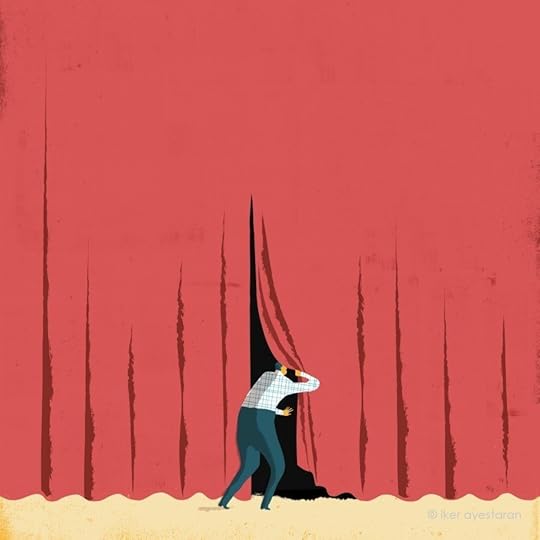
Illustration by Iker Ayestaran
A. What is the turd on the table?
It is something that is brown and moist, and people know it is a piece of poisonous waste, but they pretend it is a brownie. They are aware of the stink but perfume over the aroma. Here are some flavors of turd:
Mismanagement. For instance, management (particular leaders or leadership teams) is disconnected from reality and refusing to acknowledge the facts—or they’re guilty of bullying, discrimination, or harassment.
These are incredibly touchy issues, since the former means confronting powerful people in denial and the latter means addressing an individual’s unethical or immoral behaviors.
Toxic cultures. Organizations are highly defensive about their cultures, even when they become cult-like and inflexible or fear-driven. Telling a leader that the culture has become poisoned requires courage.
Financial improprieties. Here, the problem may be a company over-inflating revenue, such as Enron, or one that takes short-term measures to goose the numbers, such as Wells Fargo. Confronting these improprieties that have major short-term benefits and may involve illegal or unethical actions is a challenge.
Major industry shifts. A leader may refuse to address big changes in customer behavior, or the competitive landscape, or mammoth technology changes requiring tough decisions (such as Kodak and digital emergence). It’s easier to rationalize or deny shifts than articulate the business-altering trend and the need for rethinking everything.
People problems. The boss or some person with influence is acting like a jerk, or is playing favorites, or is blind to internal or external developments. In many ways, this is the biggest turd on the table, in that it requires confronting a powerful individual about his or her issues.

Illustration by Iker Ayestaran
B. Why is it hard to call out the turd on the table?
Being punished. You’ve heard the phrase “Don’t kill the messenger”? In many cultures, people who bring up messy, problematic subjects tend to draw the ire of others in the room. If it can’t be dealt with logically and analytically—if it causes people to feel upset, embarrassed, or confused—then raising these issues creates consternation. And sometimes it creates condemnation.
People are afraid of being punished—verbally reprimanded or worse—for talking about difficult subjects. For instance, they don’t want to address how the CEO intimidates everyone or how the CIO’s tendency to play favorites is lowering morale.
Being wrong. In a data-driven world, people like accuracy and correct decisions. The reasoning goes, if you follow the data, you’ll get it right. Of course, that’s not always true. In these cultures, employees are often plagued by self-doubt:
Am I reading the situation correctly? Is there a subject flaw in my thinking? Have I analyzed the situation incorrectly? Self-doubt is a highly effective censor.
Being asked to do more work. Or, as they warn you in some stores, “If you break it, you buy it.” People fear that if they raise problems or difficult issues, they will be asked to deal with them.
Being Disliked. Truth tellers aren’t popular in companies, especially when they’re telling hard truths. Most employees want to be liked by their colleagues and bosses. Articulating troubling issues will get them branded as troublemakers. This is especially true if they don’t have facts and figures to back up their insights and opinions.
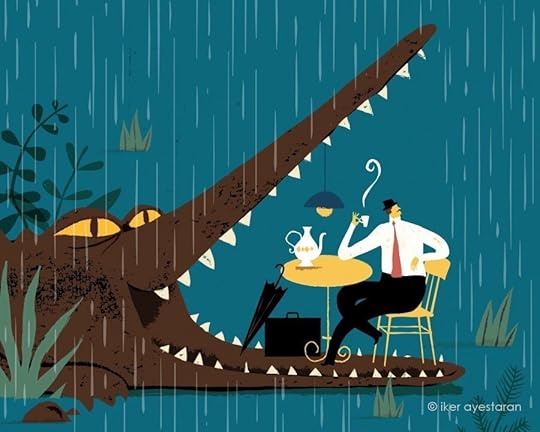
Illustration by Iker Ayestaran
C. Why do talented people miss the turd?
Narrow Obsessive Focus. When you’re viewing the data constantly and thinking about it endlessly, you’re viewing the turd through distorting, rose-colored glasses. We have all worked with managers like this, people who are insulated by all their software and systems and benchmark developments in a formulaic manner—i.e., they always compare their performance with traditional competitors or use other established measures. As a result, they miss untraditional competitors or unmeasured innovations. They see only what their screens show them. Thus, they fail to raise problematic issues because they can’t see them clearly. At first the music industry did not see—and then did not understand—the impact of the iPod and iTunes on wresting away control of the industry; what did a technology company understand about music? GM and Ford focused on each other and VW and Toyota and not Uber and Tesla till these “outsider” companies eclipsed them.
Accepting Data Without Questions. We take refuge in the data, believing it to be holy. We accept whatever the machine spits out and forget to ask how the data was collected and compiled, or what biases were in the algorithm.
Even if our instincts are prompting us to call a turd a turd, we don’t because the data says it’s actually a brownie. Today many marketers celebrate how well their online campaigns are doing and how they wish to allocate more money to these programs, despite limited overall gain and often a decline in their total business. It is like a patient who is getting sicker and sicker but believes the vital signs on the monitor, which seem to be glowing healthily. Could it be that they are not measuring the right thing, or the measurement is wrong?
Myth Making and Hero Cultures. Magical thinking prevents people from stating unpleasant truths because many companies cultures’ have religious fervor, and one does not want to be ex-communicated!
In many companies, cultural success myths are powerful, and they often relate to formulas or other numerical concepts that helped the company achieve success. Obviously, there’s validity in these cultural stories, but at times the stories become sacrosanct and that’s when they become a problem (e.g., it’s heresy to speak against the company ethos or its leaders and founders). Data-centric or founder worshipping companies that have been highly successful are especially vulnerable to drinking the Kool-Aid, since people who work in these companies often have fierce beliefs in their technology or their heritage, and they have trouble violating these sacred beliefs.

Illustration by Iker Ayestaran
D. How to encourage the calling out of the turd if you are part of leadership.
1. Anonymous tip lines or suggestion boxes. This is like training wheels for turd table talk. Yes, it’s old-fashioned, and employees may be skeptical at first about whether their suggestions will be read or acted upon, but it provides a starting point for people to voice their truths. Some companies use up and down voting of questions to address key issues at All Hands Meetings.
2. Leadership modeling of truth talking. This is a simple but effective way to integrate truth-telling into the culture. At the end of every important meeting, meeting leaders should ask the following two questions:
(a) Is there something that has not been said that should have been said?
(b) Can someone please say why what we discussed or agreed on today might be wrong?
The Navy SEALs have a practice that after every operation, they have a debrief where everybody leaves their titles at the door. It does not matter if you are a newbie or a commander; everyone is asked to talk about what they and everybody else in the team could have done better.
3. Truth-telling incentives. Nothing aligns values and behaviors like incentives. Rewarding rather than punishing people who challenge the status quo with financial benefits, promotions, and verbal approval sends a powerful message. If you want people to take risks and challenge the status quo, you need to reward such people and such behavior.
4. Admitting wrong. Bosses hate to say, “I made a mistake,” or “That was a dumb decision.” When bosses admit they were wrong, especially when they do so with humor and vulnerability, they convey it’s okay to admit mistakes and point out what didn’t work. Sometimes the turd on the table is a bad leadership choice, and when the leader points it out, it signals to others that it’s okay not only to admit mistakes but to note when bosses do something wrong. Every CEO has overcome significant boo-boos.
They survived and thrived because they realized they were wrong and rectified their mistakes.
5. Storytelling. Dramatize the positives of identifying the turd on the table. Bring in outside speakers who can lay out scenarios in which organizations benefited when people started telling the truth.
6. External middle and senior level hires. One way to ensure new mindsets and thinking is to ensure that a certain percentage of talent is hired externally including from outside the industry or the country the company is strong in. These new folks can bring not only new skills but often question the status quo.

Illustration by Iker Ayestaran
E. Becoming a Turd Slayer!
Do not fear the turd.
Call it out. Shine a bright light on it. Place it on a pedestal. Address the damn thing!
Here are some suggestions for you to become a “turd slayer”
a) Say what you think. In business we care what is between your ears. If you cannot say what you think (hey if it is wrong you will be told so, in fact even if you are right you will be told you are wrong…). Truth eventually has a habit of breaking in. Why not open the door and save time and damage?
b) Assume the person you are trying to be diplomatic to about an issue knows what the issue is. If you bring it up, you will be more respected by them. If they did not know, you will earn an ally.
c) Do not go with the crowd if your instinct says no. Often group and crowd dynamics take over in much decision making. People think about what their boss wants to hear rather than what they should say. People worry about the impact of their career rather than what is right. Sooner or later too many people are dodging their own shadow and playing mind games that lead to slow and bad decisions.
d) Do not work for a boss who cannot bear the truth or whom you fear. We are living in a time of change and most of the time senior folks need to be told that their core beliefs may no longer be true. I have seen too many companies from newspaper to magazines to many other companies hasten their decline because their leadership did not face reality, in part because their staff was scared of them.
e) Tell all the truth but tell it slant: Once you have decided to address the turd on the table, you might want to do so in a way, so the message gets through. Ideally it is in a way that does not make the person receiving the news “lose face” so much of this is best done person to person. In other times some humility, self-awareness, metaphors or humor will be called for. Emily Dickinson says it best in her poem, too much of shock and you will have blinded someone to the turd!
Tell all the Truth but tell it slant Success in Circuit lies Too bright for our infirm Delight The Truth must dazzle gradually Or every man be blind
So, let’s address the “turd on the table” wherever it might be.
For instance, this post might be a turd in itself.
We would then call it a “meta-turd”.
February 28, 2021
Scale!
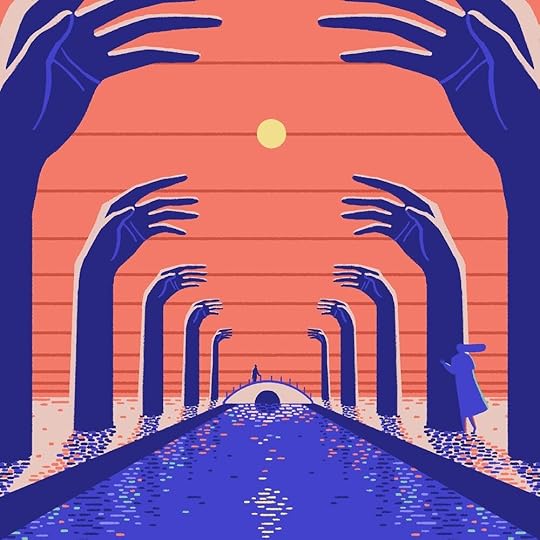
Illustration by Yukai Du
One of the long-standing tenets of business are the advantages of scale.
Scale has provided companies with many benefits from higher margins due to lower costs, to insulation from competition due to moats of marketing spending and widespread distribution.
Challenges to Legacy ScaleOver the past decade however the benefits of scale have diminished and in some cases are proving to be a disadvantage:
Scale of Distribution: With direct-to-consumer marketing enabled by the Internet and platforms like Shopify, widespread retail distribution is no longer as effective an advantage. Clearly distribution matters but there are ways to route around the big stores by going direct and creating demand that forces buyers to stock your product.
Scale of Communication: New media behaviors by people particularly search and social are leading to communication channels where spending power is no longer a competitive edge as it was in television or print where marketers cornered key inventory at advantageous prices. Platforms like Facebook enable millions of small businesses with personalization and targeting capabilities to discover customers and be discovered. As content supported by advertising declines to less than a third from nearly two thirds ( hello Netflix, HBO Max, Amazon Prime) scale of spending while still being important is losing its potency.
Scale of Manufacturing: The “Everything as a service” platforms from Amazon Web Services to Foxconn allow smaller companies to gain the edges of scaled manufacturing, distribution and technology without any of the legacy disadvantages of size.
Scale of People: From IBM to GE to Unilever to Walmart there are hundreds of thousands of employees and therefore ability to recruit and grow a range of talent and offer career advancement. Scale of people continue to be important to execute complex and large tasks but there are also new ways to re-aggregate talent. And a generation of talent wants to work in smaller and more entrepreneurial environments. In the post Covid world as we move to unbundled workplaces there will be far more ways to build teams both globally and in real time than every before.
Legacy scale still matters in most industries and is critical in quite a few like semi-conductors. In fabricating advanced chips, a new fabrication plant can cost over 4 billion dollars and there is no way around scale. Today TSMC (Taiwan Semiconductor Manufacturing Company) dominates due to its scale.
However while we can never underestimate legacy scale, there are new forms of scale that every smart company recognizes and is expanding into.
The Rise of New Scale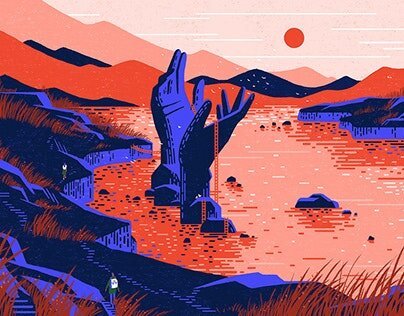
Illustration by Yukai Du
While there is a diminishment of legacy scale , there is also a rise of new types of scale that are becoming increasingly important.
Scale of Data: Increasingly companies are realizing that collecting, refining and leveraging data is what is driving the modern fast growing and highly valued companies from Amazon to Google to Uber. Data enables a new form of scale which is that of mass personalization.
Scale of Networks: On the Internet network effects play a dominant role in creating winners. Dominant platforms such as Facebook, Netflix, and Tencent (WeChat) enjoy flywheel effects of more users attracting more users and therefore marketers and businesses.
Scale of Influence: Today individuals have tens of millions of Instagram followers or leverage Twitter to reach hundreds of millions of people with single posts and tweets. If you look at scaled entities on social media, they are individuals. People are seen as authentic and certain folks like Elon Musk can move markets.
Scale of Talent and Ideas: One of the lessons of history is that every advance in technology places a premium on superior talent. Technology is a lever and when married with great talent a company enjoy major scale effects.
A vivid example of how the new scale works is Kylie Cosmetics. Kylie cosmetics was launched by Kylie Jenner to sell lipstick. In less than two years Kylie Cosmetics sold 900 million dollars of product making the 21-year-old the fast billionaire ever. Kylie cosmetics had less than 50 full time employees, outsourced manufacturing to Seed Beauty a contract manufacture and all e-commerce and fulfillment to Shopify. The single media channel besides PR that Kylie Cosmetics used was Kylie Jenner’s Instagram account with 120 million followers+ (more than the ratings of the top 10 prime time television shows combined)
This era of New Scale began to emerge in 2007 when the smart phone and social networks came to be. With mobile search, Facebook, Instagram, Twitter, You Tube, Shopify, Amazon Web Services and lots more the ground was laid for massive disruption of business in marketing today which has further expanded via enabling technologies from Square to Stripe to Paypal to Etsy among many others.
If we look at how Dollar Shave Club and others took on Gillette it was through a combination of You Tube advertising, Contract Manufacturing, Direct-to-Consumer Selling, and leveraging word of mouth on social media. Procter and Gamble’s second to none expertise in brand building, distribution at Walmart and spending scale on television did not stop double digit share declines when new approaches and mindsets were needed. Procter soon built and learned these skills but it did result in an 8 billion dollar write down for the Gillette acquisition.
The scale that many of today’s successful marketers enjoyed were the old scale which are not only diminishing but are seen as disadvantaged because not only are they not agile due to size but less authentic as a zone of control world is being replaced by a zone of influence world, and less customized as they struggle to use modern data, communication and manufacturing techniques.
So now they are aggressively buying the new companies as much for their expertise and talent as for the revenue and brands they have spawned. Coty spent over a billion dollars for half of Kylie cosmetics. Now new and legacy scale merge.
But many companies that enjoy legacy scale and now incorporate data and network scale sometimes forget one other scalable element: Talent and the influence and ideas they beget.
Scaling Talent and Ideas.Today we are living in a world where the best companies realize that a key differentiator is talent.

Illustration by Yukai Du
Google pays its best engineers 5X to 10X its good engineers because they can be 100X more productive. While the returns to talent in non-software businesses may not be as radical there is no doubt that one superior player is worth some multiple of an okay player.
But how many companies are set up for this reality that talent is the key differentiator?
Great talent offered the scale of networks and scale of data can and will impact outcomes and returns disproportionately.
Fixating on the silicon and spread sheet side of the equation (digital data and networks, measurable input costs) without also emphasizing the carbon and story side (human talent, creativity, culture) is unlikely to lead to optimal outcomes.
In today’s world most companies care about two things:
a) How to grow or re-ignite growth.
b) How to cut costs and expenses to remain competitive.
World class talent cares about two things :
a) How to grow their income, their skill set and their reputations.
b) The purpose, values, and culture of the place they work at and the people they work with.
The challenge for many companies is how to reduce costs (talent being a key cost) while ensuring they have world class people in a world where capital is plenty and talent scarce.
One way is to make sure to recognize the difference between arrows and archers.
Buying cheap arrows is one thing but buying cheap archers is another. A great archer will hit the bullseye with one or two arrows in very little time. An okay archer may need dozens of arrows and could waste a lot of time. Great archers cost more but use fewer arrows to hit the target. Cheap archers blow through a lot of arrows and can hit you in the butt!
Talent should not be weighed or bought by the pound or by some algorithmic driven FTE rate.
Where silicon (technology) can replace carbon(humans) it should, and it will in most cases.
But do not believe that all talent is substitutable with technology or some other talent. In today’s world technology allows leverage and therefore amazing network and scale effects can result from world class human capital.
There is a difference between a rump steak from a diseased cow and a few ounces of fine Kobe beef which buying by the pound cannot differentiate! (Apologies to the vegetarians…think ordinary mushrooms vs truffles)
Scaling YourselfYou are talent.
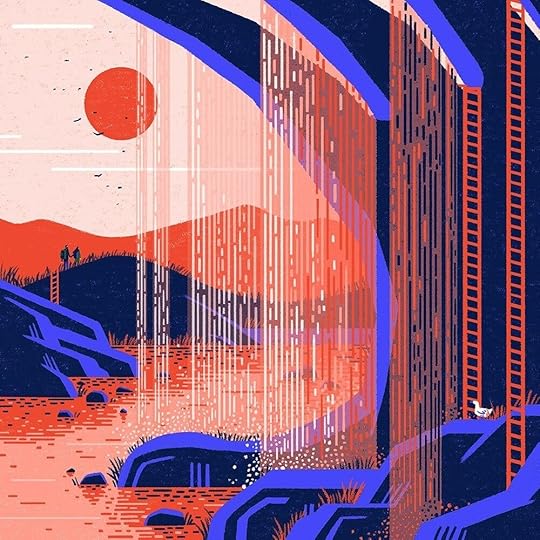
Illustration by Yukai Du
We are all gig workers with some of us having longer and better paid gigs as the work place becomes unbundled, companies work to manage variable cost (labor), half-lives of skills shorten and measurement increasingly become real time.
To thrive you need to play the scale game.
Here are some suggestions on how to scale your talent:
a) Plan your career over a long-time scale (most college graduates will work for fifty years till 70) and therefore work to remain relevant and reputable in the long run. (If you are 50 you have 20 years of work ahead of you and 3 to 4 significant shifts in the workspace so stop thinking “I will be retired soon and not have to deal with this new nonsense”
b). Scale up your skill set by setting aside to learn, investing in education and raising your hand to new opportunities and assignments. Change sucks but irrelevance is even worse.
c) Scale your reputation recognizing that truth will out and so do the right thing, be generous, do not take short cuts and only burn bridges that allow poisonous snakes to cross. Today you can only use PR and playing games to polish a rotten apple for a year or two before the rotten core thrusts through for all to see!
d) Scale through other people by helping, teaching and encouraging people. Nothing is as scalable as a unified team or people that believe in an idea. People are networks as much as any technology-based network. And when people you work with or you have helped grow you scale in ways you yourself would never have scaled alone.
In the end scale happens when you think beyond yourself, beyond your existing mindset and beyond the boundaries of your category!
February 21, 2021
Bossy Traits!
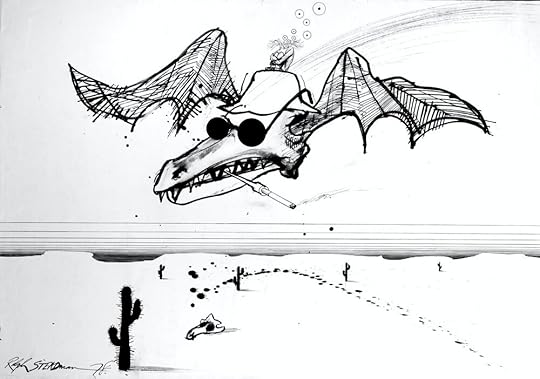
Art by Ralph Steadman
Not all bosses are leaders.
Increasingly people follow people and not titles.
Some bosses have titles but few genuine followers. Their teams genuflect in their presence but rarely respect and often abhor them in private.
On the other hand, many bosses are true leaders, and they wear their titles lightly.
These individuals exhibit the five key traits of leadership:
Competency/Capability: They know and excel at their craft which they hone, sculpt and keep relevant in changing circumstances.
Integrity: They face reality. Are transparent. Face facts and align with reality. They engender trust. They are accountable.
Empathy: They care and are concerned about others.
Vulnerability: They accept mistakes and are aware that they may not know all the answers. They surround themselves with people who have complimentary skills and are not afraid of being challenged.
Inspiration: They recognize that people choose with their hearts but use numbers to justify what they just did. That in dark times one needs to inspire and engender hope.
But even the most admired leaders sometimes are hard to deal with from time to time, because decision making is difficult and stressful especially when there is significant financial risk, competitive threat and tight deadlines.
As a result, they exhibit the traits of bad bosses.
Sometimes all of us do.
Because we are human.
But most of us rarely fall into deplorable boss mode for more than a day or two and usually apologize and correct our behavior.
Others tend to continuously vibrate and hum with odious bossy traits.
It is important to recognize the bossy traits of bad bosses so that if we work with one of these bosses or when under pressure, we begin to exhibit these traits ourselves, we can recognize and address such behavior.
The five bossy traits (bad bosses have a doctorate in one of these and a master’s degree in a couple of others) are 1) narcissism, 2) micro-management, 3) drama, 4) scheming and 5) back-stabbing.
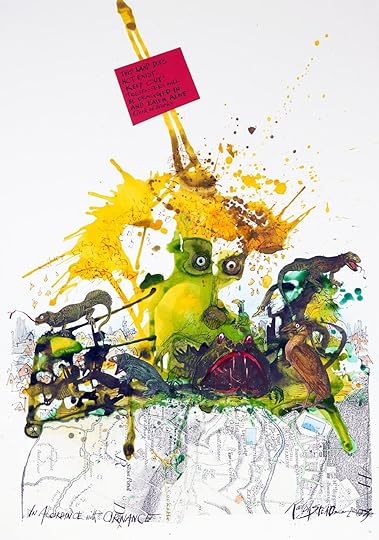
Art by Ralph Steadman
1. THE NARCISSISTIC GOD. These bosses believe that only they know the answer, only they are capable of handling the major meeting, and only they should get the credit for their teams’ success. They often believe they transcend the company. In many instances, they create a godlike cult that worships their every move, using public relations and social media to spread the word.
Their people worship them by following their commandments. Direct reports lose their own individuality when they’re working for Narcissistic Gods; they also lose their ability to draw upon their own experiences and skills to solve problems or capitalize on opportunities. Their story gets lost, and they become mindless followers.

Art by Ralph Steadman
2. THE MICROMANAGING FIDDLER. These folks are terrific operators—they know how to get things done—but as managers, they retain their obsessive detail orientation. They tell their people what to do and insist they check in with them at every stage. They are insecure and can’t let go of anything. They often manage via spreadsheets or the need for slavish following of systematic procedures. Micromanaging Fiddlers fail to understand the outside world since they are constrained by the cell of the spreadsheet or slaves to historical procedures.
[image error]Art by Ralph Steadman
3. THE OSCAR ASPIRANT. These types emote, loudly and dramatically. Erratic and unpredictable, they are a roller coaster of emotions. They greet bad news with histrionics and good news with hyperbole. These drama kings and queens are tolerated by management because they can be effective in certain roles—they can present well and even inspire others with their visions and speeches.
At the same time, they make their people crazy. People are expected to praise the boss’s performance or to raise their spirits. More to the point, these managers only want one story told, and it’s theirs. As a result, direct reports aren’t allowed to bring their own ideas, experiences, and views to the group.
The story of the boss overwhelms everything and everyone else.

Art by Ralph Steadman
4. THE SCHEMING SPHINX. This is the person who smiles, blows air-kisses and oozes charisma and friendship, says nor shares anything substantial, while sucking up as much information and probing for vulnerabilities.
A blend of insecurity and bully juice wrapped in a blanket of charm while oozing calm and friendliness.
Often more style than substance. More network than intellect. Retains power through potential threat and ability to harm versus innate talent or true goodwill.

Art by Ralph Steadman
5. THE DOUBLE-CROSSING ASSASSIN. While the previous four types are expressive (or anti-expressive in the case of the Scheming Sphinx) in their terribleness, Assassins are soft-spoken, well-behaved, and self-controlled.
Behind closed doors, however, they take credit for other people’s work, create animosity by speaking ill of people to others, and find ways to trip up others and make them fail. They are like Reese Witherspoon in the movie Election: smiling and ruthless. They win people’s trust and then undermine them.
People working for Assassins become guarded and monitor everything they say and do for fear that it will be used against them. They carry out tasks with little creativity and take little risk, knowing that even a minor slip up will give the Assassin an opportunity to target them. They fear for their work lives—keeping a low profile and cleaving to their tasks is the only way they can escape the Assassin’s bullets.
All five bad boss types know that if they deliver their numbers and meet their objectives, they can continue to exist in most organizations. This is especially true if these organizations have spreadsheet-dominant cultures where measurement is constant and meeting quarterly numbers is the highest priority.
Bad bosses are the enemies of balance; they provoke extreme reactions from their people. If the employees don’t leave the company, they work in fear or expend all their energy on managing their managers. No doubt you’ve witnessed employees go into survival mode to deal with a bad boss. They become obsequious, robotic, and myopically focused on their boss’s every action and reaction. As a result, they may be able to carry out assigned tasks effectively and help their bosses meet their numbers and objectives, but they are loath to take risks or deviate from norms.
At a time when innovation is crucial, they fall short because innovation requires behaviors that bad bosses hate. The balance is tipped heavily in favor of playing it safe.
Bad bosses unbalance companies in another way: they force people to face inward instead of outward. They spend time focusing on what their bosses have done or how to manage their idiosyncrasies, instead listening to the marketplace and customers.
The good news is that as we enter the era of the Unbundled Workplace folks with these bossy traits will find themselves increasingly impotent in their ability to command and control. There is no big office to telegraph power or a campus like facility in which to create cultish followers. No assistants to block access and an increasing dilution in the power of a rolodex when true talent connect with true opportunity in real time!
Our real bosses are the people we wish to develop relationships with and sell to—not someone in our organization or even our clients’ organizations. The best thing we can do for our internal bosses is to make sure our external bosses do not fire us. Which is why looking outside and seeing tomorrow versus looking inside and being nostalgic for yesterday helps provide balance.
Bad bosses keep us staring at our shoes. Good bosses encourage us to lift our heads and look around.
February 14, 2021
Ruptures in the Mediascape

Photograph by Guy Havell
Every decade or so there are significant shifts in the media landscape.
In the early 80’s we saw the birth of cable, the 90’s the beginning of the World Wide Web, less than a generation ago we witnessed the explosion in social media and the criticality of mobile phones as revolutionary creation, consumption and distribution platforms/instruments.
We are now in the midst of what maybe the most significant rupture in the mediascape whose implications on business and society are only beginning to be sensed. A rupture that is not just driven by advances in technology but a very deep wrinkle in the very fabric of every element of how media, messaging, content, information is created, designed, distributed, consumed, shared and trusted.
Surprisingly the streaming wars are unlikely to be as intense and in many ways will be more of a challenge to marketers as they lose opportunities to reach people as the four dominant global streaming contenders ( Netflix, Amazon Prime, Disney+ and Apple+) will likely remain advertising free. In individual countries the Big 4 maybe joined by a couple of other country specific players. ( HBO Max and Peacock are likely to be somewhat scaled players in the US assuming that their parent companies of AT&T and Comcast can invest in them and also fund/defend against 5G since connections are their bread and butter business).
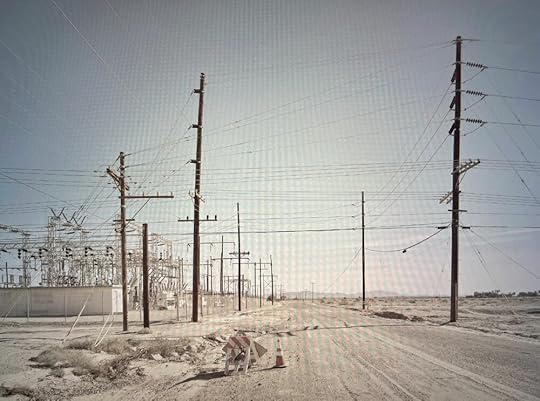
Photograph by Guy Havell
1) From the Dynamic Duo to the Seven Marketing MongrelsWhile the Google and Facebook family still dominate in a majority of the non Chinese landscape, they have been joined by five very viable options in Amazon and four fast growing and scaled platforms of Twitter, TikTok, Pinterest and Snap whose stock prices have now been on an absolute tear providing them with ammunition to buy a range of companies and continue to attract and retain talent from the big giants. TikTok is the fastest growing platform amongst these and it’s impact is seen in both its massive year to year growth (almost a 10X growth in revenue in 2020) but also in how an entire eco-system of content creators, partnerships, and e-commerce integrations is emerging.
All seven of these platforms are continuing their journey from pure breeds to mongrels. The old designations of search, e-commerce, social and mobile are very yesterday and should be dropped pronto. These are multi-media, multi-able marketing and business platforms. They integrate commerce and lead generation; they can be micro-targeted or scaled up. They can provide a blend of content creators and influencer networks to accelerates marketer’s distribution footprints and storytelling and content possibilities.
In the United States these Seven Marketing Mongrels are being joined by at least two other major players which are Walmart and Target which are investing deeply in becoming media companies. Here too, one will see the blending of messaging, utility, distribution, commerce across the consumer/customer journey.

Photograph by Guy Havell
2) Expanding from Colonization of the Eyes to the Colonization of the EarsTikTok is the first stream which requires you to turn the sound up. Music is integral to the experience. We are now in a world of sonic explosion from the dramatic rise in usage and value of podcasts, to the aural hardware competition between Apple, Bose, Sony, Sennheiser for headphones to feed your ears to the Harman Kardon, McIntosh, Bose, Burmester and Bowers and Wilkins battle to make your car the best concert hall. Voice with Alexa, Siri and Google is now increasingly the new interface. And let us not forget the current “it” platform of Clubhouse which is a strange new fusion of live and on demand call in talk radio.
Sounds are intimate and they stir memories and in the form of music take you where you want to go. Sounds are fluid, flexible and make for a very agile cost-effective fabric to stitch and make the marks of a Brand. As voice grows as an interface and machine learning progresses to a level where seamless translation between languages as well as other advances become broadly available many new possibilities will arise providing utilities, customer support and much more. For more on the new sonic landscape click here.
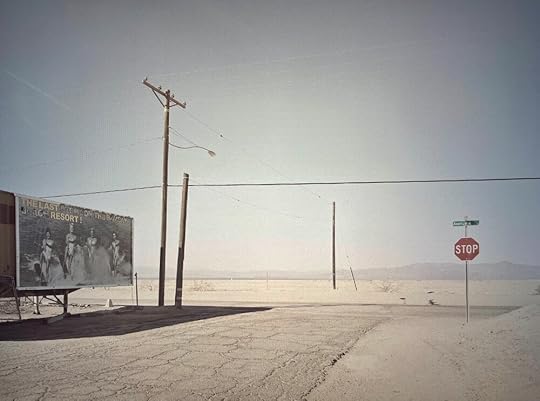
Photograph by Guy Havell
3) The Out of Home Media RenaissanceModern technology hurt every legacy media from newspapers to magazines in particular and radio and television to a lesser degree but enabled OOH, the previously stepchild of media which was usually dealt with by “specialists” in some basement room. But now boards have become screens that are brighter, cheaper and everywhere. The human painters and poster hanger uppers have been replaced by real time programming where messages can be personalized down to weather conditions and locality but can be scaled up to national levels as the screens are increasingly networked. And given when you are walking or driving you usually are not also looking at media on your phone it actually is a media that garners the most valuable commodity which is attention and with screen sizes of epic proportions creates a wide canvas of messaging possibilities that reward this attention with creativity. Finally, as we spend more time in the digital, augmented and virtual worlds it will be one media which will dominate IRL (in real life).
Smart companies will integrate OOH into the mainstream of marketing and media strategy and no longer leave it isolated. It is the ultimate mongrel media in its abilities to chameleon like shape shift from local to national, from static board to moving video. Its ability to channel a selfie into a towering image on Times Square also makes it a key social media enabler and enhancer. Nothing is more Instagrammable. More on the future of OOH here.
4) The “Cook/Zuckerberg” war is not just about different approaches to privacy and business models of Apple and Facebook, but also about how key messaging is to the future of the two companies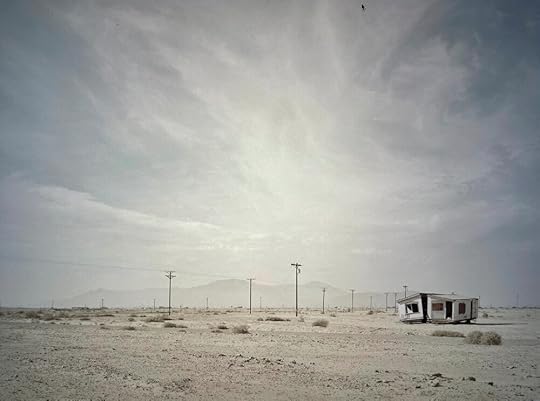
Photograph by Guy Havell
For those who have been to China and used apps like WeChat it is clear that messaging apps in the US are infants compared to what they can grow up to be. WeChat integrates every aspect of life from banking to ride hailing to social media and more. It is a landscape and an eco-system built around a gushing river called messaging. If Facebook were ever broken up my bet would be that Mark Zuckerberg would end up running WhatsApp which is where most of the potential growth of his company is. This is why he invested $5.7 billion for a 9.9 percent stake in Jio Platforms in India. He probably hopes that WhatsApp, the dominant messaging platform in India will evolve into a WeChat for India ( Many Chinese apps including TikTok are now banned in India). Tim Cook is also major player in messaging with over 1 billion iPhones in the world all with Apple Messaging/Facetime.
With the exception of gaming, people spend more time on messaging apps than any other app or platform. The future of Fintech, identity and mobile commerce are going to be deeply integrated with messaging.
To be competitive in the future focus on messaging strategies, partnerships and opportunities.
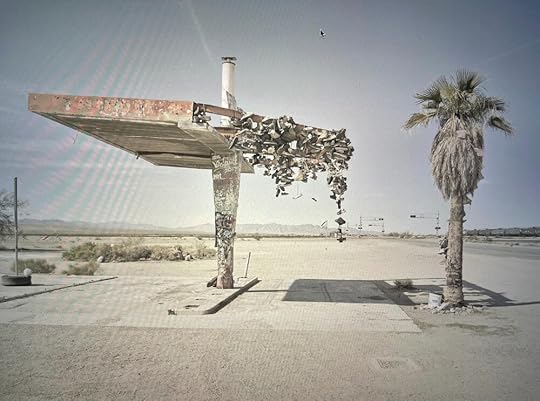
Photograph by Guy Havell
5) The Rise of a New Content, Creator and Distribution Eco-systemThe acid of modern digital technology and networks is burning apart the muscles that held content and distribution together and that enabled a hierarchy that separated the esteemed publisher/ editor/creative director from the masses and that allowed windowing, fixed programming schedules, unnecessary bundling and “quality control”.
The questions we will all be grappling with are:
Who is a gatekeeper? What is a media company? Who are creators? Who do we trust?
Andreessen Horowitz now A16z, a multi-billion-dollar firm that invests across industries, announced in January that it's building a new and separate media property. "We want to be the go-to place for understanding and building the future, for anyone who is building, making, or curious about tech," it said in a blog post.
Also, Elon Musk interviewed the CEO of Robinhood in Clubhouse (both a16Z comp-anies) which became a newsworthy event and put Clubhouse on the map with a massive spike in sign-ups. These and other recent events upset many journalists including some highly innovative and future forward ones like Jessica Lessin of the Information who in a very passionate piece entitled “ The Nightmare Awaiting the News Industry” questioned the lack of real journalism or transparency among other issues.
Then there is the reality of a new generation of creators on You-Tube and TikTok, the fact that for every journalist there are five public relations experts, that many writers utilize platforms like Substack to go directly to readers and monetize their work. Today the memes of Elon Musk and others scale far greater than any of the major networks. Kylie Jenner with her 140 million followers has greater potential reach than the Superbowl! The line between content creator and influencer and media company has blurred beyond recognition.
Today any investor or trader worth their salt looks beyond Bloomberg, Thompson, the FT and the WSJ by monitoring Stocktwits, Reddit’s Wall Street Bets and Seeking Alpha Pro. There is a wide chasm between the media behaviors of those in power and those who are the big audiences of today.
February 7, 2021
The Year of Immunity
 1.2021: The Year of Immunity.
1.2021: The Year of Immunity.If 2020 was The Year of Covid-19, 2021 will be known as The Year of Immunity.
It will take at least all year for a majority of the people in many countries to be inoculated.
It is increasingly apparent that 2021 will be like 2020 with most people working from home, events and restaurants partially filled if they are allowed to occur or open, schools grappling with how and if they restart, as well as a slew of other challenges.
We are coming to the realization that while there is a light at the end of the tunnel, we are only slightly more than halfway through the tunnel.
This is creating significant mental anguish in large parts of the population.
Mothers with young children are amongst the worst impacted with millions of women having to give up work and millions of others who lost work due to the shutdown finding that the period of their unemployment has been extended and they themselves are over extended.
The Year of Immunity will at its end bring the great benefit of controlling the disease, eradicating its most harmful aspects and enabling a less isolated life.
But the implications of 18 to 24 months of a significantly altered form of living will bring about it many more permanent changes in every aspect of society than if the shutdown had been shorter.
A recent Wall Street Journal article hammers home the reality that we are likely to live with Covid for years like we do with the flu, measles and HIV, even after many of us are vaccinated. Many industries are now planning for this “new strange” as it is clear there is going to be no “new normal”.
2. The Unbundled Workplace.In the first months of the lock-down everyone was counting the days to when they could return to the way they worked in December 2019.

As 2020 progressed many employees and management found that for most industries there was no significant drop off in productivity from a distributed workplace and the drawbacks of not being with teams was often offset by the increase in flexibility and reduction in travel time and reduction in costs associated with working from home.
The new model that was being planned for was now a hybrid one with maybe 2 working days a week at the office and the others at home.
There is now however a new emerging mindset that the half at home and half at the office model makes very little sense. The Unbundled Workplace, which is gaining traction, suggests a future with very little time being spent in the office you left behind in March 2020.
The Unbundled Workplace will combine four spaces:
a) Home: The safety, the flexibility, the ability to focus (especially if school resumes and children are not underfoot), and the cost and time savings of not having to travel to work will ensure that the home office will be foundational space that most people will spend the majority of their time getting work done.
b) Distributed Work Pod: Either to enable gathering of teams or the option to work outside the home many companies will sub-lease space (e.g., We Work, Regus) near where clusters of their employees live. This will enable teamwork and getting away from home with a far more time and carbon friendly footprint.
c) Periodic Events/Experiences: Automattic (owners of WordPress and Tumblr) is a1800 person global company where everyone works remotely but teams get together at a location of the team’s choice (often exotic ones) for a few days every quarter to collaborate, build relationships and learn from each other. Every year for one week the entire company gets together for education, inspiration and bonding. Increasingly companies will create periodic events and experiences to offset the downsides of working at home which are difficulty in establishing and building relationships, culture sculpting and skill enhancement. There is no reason that this needs to be done in the offices left behind or a large capital expenditure needs to be allocated to re-configure spaces when far more impactful and cost-effective external options are available.
d) The Legacy Office: The old central office or HQ will remain but will be significantly downsized and be more of a gathering space for some key training or client meetings, a roosting place for senior management and a museum of relics and artifacts that are the key to the story telling and culture of the company. Most employees will likely spend less than 20 percent of their working year at this office.
When you hear the word hybrid model do not think it is about half time at the office and half time at work but rather think of four spaces with your old office being a tiny sliver of the time you spend in your future “workspace”.
A combination of two years of working differently which includes people moving to different cities, changed behavior and expectations of employees and clients combined with modern enabling technology is going to accelerate the great unbundling.
The second order impact of these changes on central business locations from parking to restaurants to hotels is going to be seismic. Cities are not going away but they are going to be dramatically re-structured. The Great Re-Wiring discusses some of these impacts.
In the Year of Immunity, it is unlikely that any HQ, any downtown and any old way of thinking about “the office” can be inoculated from the dramatic change underway.
And every person regardless of level is going to have to hone new skills and approaches to career management including learning to work as a “company of one” which is discussed in The Future of Work.
3. Immunity Inequality.
Bill and Melinda Gates warned in their annual letter that the lasting legacy of the coronavirus pandemic could be "immunity inequality" — a wide and deadly gap between wealthy people, with easy access to coronavirus vaccines, and everyone else.
These gaps will occur between industrialized and developing countries, between wealthy and less well to do people, between ethnic groups and between urban and rural dwellers.
Expect a rash of articles, scoops, shaming and more as people use connections to break the line and a focus on how many people in need and at greater risk are not being inoculated.
Another form of Immunity Inequality which will challenge society will be those who refuse for religious or other reasons to be inoculated putting a real dent in eradication efforts. In Israel which has done probably the best job of vaccinating its citizens a segment of the Ultra-Orthodox not only decline to be vaccinated but gather in huge groups without masks to bury their Elders who have died from Covid-19!
This Immunity Inequality will lead to a hierarchy of immunity with the most royal being those who get vaccinated first with whatever is considered the “it” vaccine of the moment.
Did you get vaccinated?
Did you get Moderna? Pfizer? Astra Zeneca? Johnson and Johnson?
Already the vaccination selfie is scaling worldwide…soon it will be branded.
 4. The Year of Immunity is the time for companies to truly make their purpose, values and ESG promises a reality.
4. The Year of Immunity is the time for companies to truly make their purpose, values and ESG promises a reality.McKinsey recently published a piece on the risks and challenges of a global vaccine rollout.
It is among other things a logistic, education and data challenge of gigantic proportions.
If there is a moment for the amazing talent at companies with global scale, data expertise, micro-targeting and logistic chops called Google, Apple, Facebook, Amazon, Walmart, Walgreens, CVS, and other FTSE 100/Fortune 500 companies this is it.
Already Walgreens and CVS are deeply involved in the vaccination process and Amazon and Walmart are pitching in. Can you now imagine if the micro-targeting powers of social media algorithms were used to educate everyone about the vaccine all over the world? If the app that Google was forced into saying they were developing is fast tracked and actually launched globally. What amazing progress is possible if the best engineers and operational experts use their skills from getting me to click a link to helping save lives!
This is not a time to hedge since this is not about whether you are Democrat or Republican, for big or small government etc.
It is a time of life or death.
And we will see the true mettle of leaders.
Every company in the world should recognize what they did to help get more people informed, educated and to make vaccines accessible during The Year of Immunity will be a mark that will make them or one that will hurt them.
5. Resurrecting from the Year of Covid-19 and the Year of Immunity.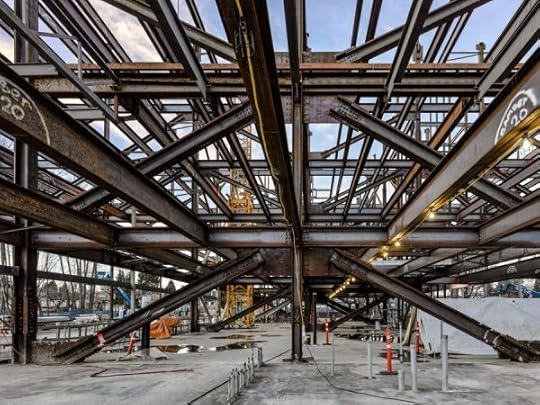
In May of 2020 in a piece called “The Great Re-Invention” the crisis was described as one that was likely to drive more change than anyone expected because it was going to be a combination of a health, financial and social crisis, it could and would touch everyone, and it was going to last longer than most people expected. As a result, people would start or stop doing things due to inertia or habit and new behaviors and expectations would be forged.
We were going to go through three phases. A phase where we had to face and address fragility of us as humans, of business and of society and government. There would be an emphasis on safety and security.
We would then move to sculpt resilience which would include re-thinking society, how businesses operated and managed their balance sheets and how and where people lived and worked.
But to come out better at the end we would need to move to resurrect!
This would mean tearing up every business plan and projection from December 2019 and starting with a blank sheet of paper and asking three questions:
a) How has my customer and consumer changed since the end of 2019. What new behaviors have they formed. What new needs have to be met?
b) How have we done as a company and team. What fault lines have been revealed? What has remained resilient? What new opportunities may be available? What new competitor have formed especially outside of the usual suspects?
c) Keeping a focus on customer needs and our own self-analysis what new products or services would we create with only three constraints being that 1) it has to be legal, 2) it has to be technologically possible today and 3) it has to break even in 3 years or less?
We should not think about how we re-start or go back, but rather how do we start afresh and move forward anew!
There is no vaccination against change.
All photographs by Andrew Latrielle.
January 24, 2021
Rulers

Photograph by Peter Eastway
1. Not all rulers are leaders. Many leaders are not rulers.True leaders tend to exhibit six key behaviors:
Competence: They have expertise and capability in their field.
Realism: They accept, acknowledge and deal with facts, hard data and the reality of situations.
Integrity: They engender trust. They are transparent in their dealings.
Empathy: They care about others including institutions and not just themselves.
Vulnerability: They acknowledge mistakes and surround themselves with expertise they can lean on or who can speak truth to them.
Inspiration: They realize people choose with their hearts and justify what they do with numbers. They move people to see beyond the challenges of today to a better tomorrow.
Leaders may not have titles, employees or zones of control but they are likely to have respect, followers and zones of influence.
Rulers often have leadership qualities but sometimes they do not.
Some come to rule not through the talent and disciplined behaviors of leadership, but primarily though some combination of power brokering, fear mongering, ignorance peddling, or inheritance.
If you strip away the trappings of power, the ability to punish, the pomp and circumstance of an office, an institution or a company from a person, can they continue to influence, motivate and make an impact?
Leaders tend to fear they are not good enough to the challenges at hand and work to build scaffolding teams around them and work to improve.
Rulers tend to fear that they will lose power and often turn to intimidation to offset and distract from their internal hollowness which are chasms echoing with insecurity.
These people who believe their flatulence has the aroma of Chanel 5 should not be feared but pitied. When you have to deal with them realize they have been given a life sentence of being chained to their own shards of internal cacti and seeping vileness !

Photograph by Peter Eastway
2. We all have different rulers with which we take measure of ourselves and others.We all have different measures and definitions of success.
Money. Fame. Power. Family. Creativity. Expertise. Connections. Peace. Charity…
We evaluate ourselves and others according to these different benchmarks.
It is important to understand what drives us and what drives other people.
This allows for different people to find common areas of motivation and therefore co-operation.
Not understanding the internal rulers that we gauge and measure ourselves with or the rulers of others often leads to conflict.
As important is how we are to be measured by others.
Steven Levitt of the University of Chicago has stated if you understand someone's incentives, you can do a pretty good job of predicting their behavior.
Three simple questions one should ask in order to enhance partnerships, relationships, teamwork and understanding of other people.
a) How do you define success?
b) How are you being measured/evaluated?
If you are a parent, you may be able to influence definitions of success. If you are a boss, you may be able to influence measurement and evaluation metrics.
In most cases it is really difficult to convince people that their measures might be wrong.
You either align with, come to understand, accept or try to work with them.
Or help them come to some form of self-understanding and realization through stories and emotion. It is unlikely that facts or figures or demeaning and making fun of them will work.

Photograph by Peter Eastway
3. Many people we admire and believe ‘rule” have broken rules while many who break rules do not deserve to rule.Many of the people we admire have tended to break rules and question the status quo.
Galileo questioned whether the earth was at the center of the Universe. Picasso invented new forms like Cubism that collapsed and re-expressed the rules. Steve Jobs asked us to “Think Different”. Elon Musk does not follow rules.
The key with these rule breakers is that they were or are builders creating things that transformed and positively impacted the world of science, art, business and technology. They did not tear down society or other people but rather got the world to see, think and feel differently.
They were about breaking rules in ways that empower, that open new horizons and drive growth.
These are rule breakers that one needs to support, defend, and protect. They put themselves at risk. They aim for a mutual greatness. A greatness of fame, wealth or something for themselves and also for a broader society.
In these cases, we say “X Rules!”
Then there are those who put a sock in their mouth to be different, fling dung at traditions and generally focus on building walls, shock value and demonization.
In these cases, we wonder what has got wrong with them.
Many of these rabble rousers think low and ignite emotions.
Increasing friction creates heat and is not cool in an interdependent and connected world.
They could learn from Simon Peres the late President of Israel who said: “Think Higher. Feel Deeper”

Photograph by Peter Eastway
4.Some “rules” that have stood the test of time and are worth considering:In the end one realizes that all the advice on health, wealth, career, and life can be distilled down to a few “rules”:
a) Health: Sleep enough. Move more. Ingest in a balanced and moderate way (and these days wear masks!)
b) Money: Spend less than you earn. Reduce expenses so you do not price yourself out of your dreams. Diversify assets. Invest for the long term by buying and holding and leveraging the power of compounding.
c) Career: Find purpose. Celebrate connections. Be patient. Seek growth.
d) Life: Understand that life brings with it loss. Learn continuously. Be grateful. Be true to your word. Love more.
The challenge then is in the doing.
In the living, rather than reading and discussing, the imagined life.
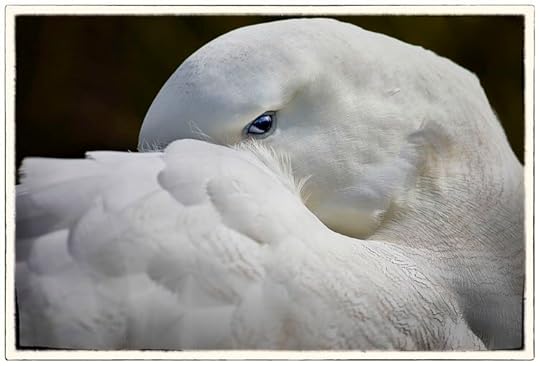
Photograph by Peter Eastway
5. There are hidden rules that govern us which we may not yet fully understand.There is a possibility that genetics and the rules of natural selection combined with modern algorithms that colonize our minds make us fret, covet and rage in ways that leave us no real control.
Some believe we may be in a matrix. Or in a video game controlled by higher beings.
That everything is a simulation.
Everything is determined by evolution. By machines. By math.
Or maybe not.
As T.E. Lawrence said “nothing is written”
For instance how to explain beauty?
In “How beauty is making scientists rethink evolution” Ferris Jabr interrogates a deterministic rule-based reality and ends with….
If there is a universal truth about beauty — some concise and elegant concept that encompasses every variety of charm and grace in existence — we do not yet understand enough about nature to articulate it. What we call beauty is not simply one thing or another, neither wholly purposeful nor entirely random, neither merely a property nor a feeling. Beauty is a dialogue between perceiver and perceived. Beauty is the world’s answer to the audacity of a flower. It is the way a bee spills across the lip of a yawning buttercup; it is the care with which a satin bowerbird selects a hibiscus bloom; it is the impulse to recreate water lilies with oil and canvas; it is the need to place roses on a grave.
January 17, 2021
Art & Technology

Photograph by Jimmy Nelson
Art is technology infused with human creativity.And as technology relentlessly advances the possibilities of art, artists and those that interact and participate with art are greater than ever.
It is no longer a fission of left brain (science) versus right brain (art) but their fusion that will be the future.
From the earliest discoveries of fire to modern computing devices and cloud-based software, humans have bent and leveraged technology in creative ways to express themselves and connect with each other and the wider world.
Fire did not just keep us warm, enabled the cooking of food and forging of new tools but it also let people turn clay into hardened ceramic pots and vases, useful for carrying and storing food, water, or other items which were then shaped and decorated in ways beyond their functional use.
Today like never before technology is enabling artistic and creative endeavors by a) fueling new art forms, b) enabling far more people with a variety of tools to express themselves creatively and c) scaling the ability to share, display and connect with potential audiences and patrons.
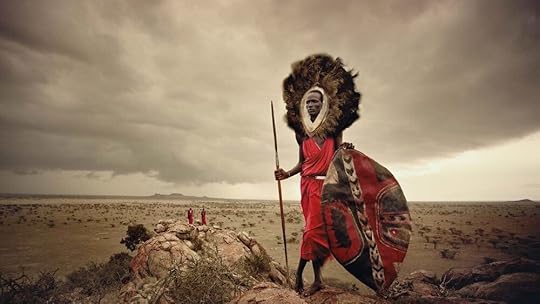
Photograph by Jimmy Nelson
1. PhotographyToday photographs are the most widely created and distributed art form.
They have been turbocharged by camera phones bursting with mega pixels and magical software. The ensuing images are then scaled and distributed via social media feeds algorithmically optimized to maximize engagement.
A long way from Ansel Adams and the stationary bulky camera but also a significant distance from a portable film Leica used by the great photojournalists and creative photographers in the latter half of the 20th Century.
Some folks pine for the days of old.
They need not pine since they can use a medium or very large format camera loaded with black and white film and wait for the ideal moment. But their efforts will pale in comparison to someone using a modern digital Leica Q2 or M10 or even an iPhone12 Pro Max and then tuning the result in Adobe Lightroom.
The aforementioned Ansel Adams himself spent hours optimizing photographs in the dark room and were he alive today would probably be an expert at Photoshop!
While technology enables the possibility and potential of artists it does not necessarily make an artist. Similarly, the refusal to leverage modern possibilities and hold to traditional ways does not cause one to be a more “genuine artist”.

Photograph by Jimmy Nelson
2. FilmIt is in film industry that we often encounter the battle between “the way it was and should be” be versus the future.
Not only is the movie theater increasingly a container of the past but the two-to-three- hour film itself is just one way of modern film expression.
A case can be made that in today’s streaming eco-system artists working in film have far greater ways of expressing and creating their art then when they were limited to movie and television studios of the past. Why be constrained to three hours when the better idea maybe a series (Queens Gambit was originally a movie idea)? Why be limited to what can fit in the few theatres or is curated by some mysterious coven of coastal “taste makers” when a world of possibilities can be sampled and global audiences reached via a Netflix, Acorn, Eros, Criterion and much more?
The ability to determine how to release (weekly, all at one time, in phases) one’s work, the global scale of audiences reached, the creative freedom and new economic possibilities have made streaming television the new high art form of film versus the movies.
Most theatrical movies are now commercials for the eco-system of spinoffs and merchandise that follows. And many of the truly artistic films which may be more edgy, risky and artistic movies from Roma to The Irishman to One Night in Miami are now funded and launched by the streaming channels. They are not crushing but unleashing creativity like never before on a global scale.
A reason “The Mandalorian” on Disney+ has resonated so well is the fact that it has the space to build its world and story versus being Star Wars 10: The Emergence of Yoda.
Not surprisingly, talent is rushing to streaming and companies like Disney while verbally mollifying and blowing kisses to the theatrical industry, are betting their company on streaming.
With larger and cheaper OLED screens, audio spatial software bringing surround sound to headphones and improvements in discovery, every technology advance in film is taking place in personal and home viewing spaces.
Theaters only advancements as they copy Alamo Draft House will increasingly be to morph into restaurants and bars to socialize and go out on date night with a film on the side.

Photograph by Jimmy Nelson
3. MusicWhile there is a recent resurgence in vinyl among the diehard aficionados the future of music is streaming.
Most of joy of vinyl is in the ritual rather than the result. There is a certain joy in placing vinyl on a turntable, perusing the liner notes and accompanying art that the physical format enables. Then there is the romanticizing of the crackling hiss of mechanical impurity brought to life by the scratches that is all about a memory and a story. A memory and story separate from the “warmth” of the music that only vinyl can supposedly re-create.
The great American audio gear firm, McIntosh, with its old-fashioned transistor quality has seen the future and has been releasing their wonderful gear with its glowing green dials optimized for headphones connected to digital music.
Streaming music via Tidal (much higher quality than Spotify), with a great pair of headphones and digital amp is absolutely stunning.
The benefits of streaming not only include the convenience, catalog depth and curation (both software enabled and curated by other subscribers) but increasingly the curation and community provided by artists and emerging artists.
Bandcamp and Soundcloud are two excellent sources for a different independent and less commercial take on music than those of Spotify and Apple Music.
The other area of great advance in music is in automobiles. Today it is very likely that the best sound system most people have is in their cars. The major audio companies now combine hardware and software design working in tandem with the auto manufacturers as the cars are being designed (McIntosh has partnered with Jeep). The new Mercedes S Class has speakers in seats that vibrate to music at certain software settings to create a 4 D sound experience!
To understand the power of how modern technology can unleash and enable music check out Digital Concert Hall of the Berlin Philharmonic which among other things has one of the best user interfaces and discovery engines I have interacted with. Any company waxing poetic about “Brand Experiences” should check them out (unfortunately most of the functionality requires a subscription which I would highly recommend even if for just a month to truly understand what is possible)
What makes the Digital Concert Hall amazing is that when the new physical orchestra hall was constructed in Berlin it was built not just to optimize sound for the live audience but to record high quality audio and video from multiple angles for home subscribers and streaming audiences. As a result, you feel you are sitting in the orchestra and watching and hearing the music in ways that enable a new level of appreciation.
They built and anticipated for a global and digital and a new demographic future where the next generation of concert subscribers might wish to engage on demand from home and that home maybe in Japan or India and not in Berlin.
Because of their foresight, the Berlin Philharmonic continues to perform all through the challenges of Covid-19 for the world and their subscribers even though they are playing to an empty orchestra hall.
And for the aspiring Mozarts and Dylan’s of the world there are new ways to learn instruments and much more. For instance to understand the depth of what is possible if you wish to learn (or teach) guitar take a look at Truefire Studios.

Photograph by Jimmy Nelson
4. The Written WordBefore photography, film and recorded music came the word and its most popular containers the broadsheet newspaper and the bound book. Both remain with one (the physical newspaper) in deep decline while the other (physical book) continues to grow and prosper.
The broadsheet after being continuously diminished in its size and heft has been increasingly replaced by its digital manifestation while the book has been complemented rather than be replaced by its audible and electronic representations.
Why has the vinyl of reading, the humble book, continued to grow? Is it because the form allows for disconnection so one can immerse in a world of imagination and the focus of deep learning? Or is the ability to underline sentences and scribble in the margins arguing or agreeing with the author something difficult to replicate in a digital format? Or is it that when you are reading a book in many cases you are both everywhere and nowhere and the silence of print is particularly enabling to this reverie? Or it just might be books make great artifacts to decorate a room or office or signal learnedness and taste?
While the book prospers the written word has also burst out its containers of the past with new formats including blogging platforms like Wordpress and Medium or newsletter publishing from Substack, Scrollstack and others.
These are some of the on ramps for emerging talent and off ramps for established talent to and from the world of newspapers, magazines and books.
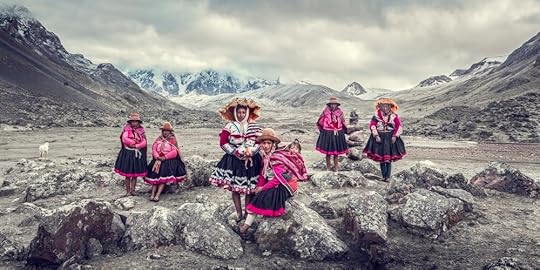
Photograph by Jimmy Nelson
5. Museums.The world’s greatest Museums are no longer in Paris, New York, Chicago, London or Florence. They are in the Cloud and probably best portal into the amazing world is Google Art and Culture Page (Openculture.org is another great portal)
Here, the full power of modern technology to support, promote and celebrate art and culture is in full display. Walk through museums, get microscopic looks in high definition to a small part of a painting, rotate and move sculptures and much more.
Travel across the world doing deep dives into the landscapes outside museums, the interiors of the museum and all the art that lives there.
Yes, they do not replace a visit to a museum.
They may have surpassed the museum!
And for most of the world it will be the only way they get to a museum.

Photograph by Jimmy Nelson
6. Mongrel Media.Digital is like hydrochloric acid.
It burns through constraining containers.
This is true in business and art.
Podcasts:Take the intimacy of the written word and marry it with digital sound and the access of cloud-based delivery and you have a wonderful recent form called the podcast.
TikTok: Take modern AI, the ubiquity of the mobile phone and combine it with the creativity of people and you have a fast growing, highly addictive, new content form called TikTok.
New York Times Digital: Take world class journalists and photographers and combine them with digital artists, software experts and remove the constraint of space or being limited to the printed word and you have New York Times Digital.
Gaming: Take hardware, software, film, music and story telling and fuse them and you get the 165 billion dollar gaming industry which is larger than the film, music and publishing businesses combined. Starting on low powered consoles it has spread to hand held consoles, cloud based delivery, mobile phones, consoles with the power of super computers and much more.
Jimmy Nelson’s Homage to Humanity: Take a world class photographer who goes miles into the wilderness to photograph our disappearing heritage with heavy large format cameras and combine him with a nine person crack digital team and you have a mix of book, video, music, and virtual reality (leveraging enclosed cardboard glasses) that take a book to where no book could go, and you to places you did not know existed while creating art that refuses to accept limits. Explore here: https://www.jimmynelson.com/homagetoh...
The future does not fit in the containers of the past.
The pipes to the future are laid by modern hardware and software plumbing.
But it is the human connections and art and meaning that this plumbing enables that makes life worth living.
Let us not fixate so much on the plumbing that we forget the poetry.
January 10, 2021
Management Lessons
In the past few weeks I have had the opportunity to address the leadership teams of a couple of Fortune 500/FTSE 100 companies on some of the best management practices I have come across.
To prepare for these opportunities I reviewed a piece written eight years ago to mark the 2012 retirement of a boss and mentor, Jack Klues, which was called 8 Management Lessons from a Great Boss.
Almost a decade later the lessons still resonated and rang true. All they needed were a few edits and additions to incorporate the passage of time.

Photograph Clyde Butcher.
1. There is no substitute for hard work: Talent matters but is not enough. Hard work, focus and persistence are what makes for success. Never “call it in”. Tim Ferris and all those books of 4-hour workweeks and stuff are fantasies. If you want to do well, you have to work your butt off. Period. Even if you are supposedly smart.When you see people, you admire do things effortlessly, it is because they have practiced, continuously iterated, and learned. As a result they have sculpted intellectual and emotional muscles that now make their performance second nature.

Photograph Clyde Butcher.
2. Constantly learn and keep upgrading your skills: The best managers are perpetual students constantly growing. They exhibit three traits:a) Exploration: They explore new areas outside their category knowing that the future of their industry is likely to come from outside of it. They seek guides and experts to help them navigate what they do not know. They travel to meet start-ups and to different nations to understand other perspectives and new approaches.
b) Engaging provocateurs/ jesters: Often it is only the clown that can convey the truth to the Crown. Rather than have “yes women and men” chant about the greatness of the dear leader they retain challengers and questioners.
If you want somebody to reflect what you say, it is far more cost effective to replace a senior manager with a full-length mirror.
c) Setting aside time for learning: Their calendars have time set aside to learn. Usually they are prolific readers and intensely curious. As Satya Nadella, the CEO of Microsoft, notes they display a “learn it all” mindset versus a “know it all” mindset.

Photograph Clyde Butcher.
3. Integrity, truth and your word are everything: Winning is important. But never at any cost. Integrity, fair play, and transparency are key.If you make a commitment keep it. No ifs or buts.
Trust is the critical currency in business and relationships and your reputation is the issuing bank.
If you have trust you also have speed.
And you do not build reputation and trust without principles and sticking to them even if it is inconvenient to your career.
Build your reputation by speaking truth to power if appropriate.
Sometimes this may mean going against the grain and what is majority opinion.
By being fearless and calling things out (politely, calmly and often with humor) versus bending the knee to the powerful, the moneyed and the in-fashion.
Realize that people who go with the flow even when the flow is not the way to go are not leaders, but opportunists and schemers.
The lack of an internal compass has them leaning in any direction where the magnetic force of power, money and fame lures.
This eventually finds them lost.

Photograph Clyde Butcher.
4. Be accessible and encourage challenges: Regardless of how powerful or famous or busy you are, make sure that people can get to you easily and feel safe and free to speak what is on their mind and in their hearts.Whether it be a student, a startup, someone who sounds like a nitwit with a crazy idea, it is important to find time to meet these folks. Be wary of over relying on a bevy of executive assistants to filter and shoo away people. To grow it is essential to meet new people, to listen, and to be available.
Encourage people to challenge you. Work to be respected and admired, not feared.

Photograph Clyde Butcher.
5. Always take ideas, insights and imaginative new ways to grow to clients and never be scared to tell them what you think: While it is critical to have operational excellence in the day to day and to drive the results whether in performance or cost savings promised, it is key to take insights, ideas and initiatives to help Clients build business.Any world class Client always has someone calling on them with new approaches and if you are reduced to just day to day delivery, you will find yourself increasingly irrelevant and commoditized. If there is a better way, a faster way and smarter way to substitute what you are doing with another approach, you should adopt it and or take it to them. Even if it hurts your bottom line.
Respect Clients. Listen to Clients. But never fear them. Provide them with perspectives, POV’s and provocations. Sometimes you have to choose your spot and time to push back, but never be reduced to just an order taker or a task rabbit.

Photograph Clyde Butcher.
6. Your success is mostly not because of you: Your success has to with many factors and most of them are not you.First, it is the talent around you. Second, it is the company you are working for (the company comes first and never imagine you are irreplaceable or are bigger than the company), third it is the prestige of the Clients you get work with and finally a lot of it is chance, luck and timing.
Be wary of supposed “superstars” or “rock stars” who think they achieved it all themselves and take themselves too seriously.
Never forget where you came from and all those who helped you.

Photograph Clyde Butcher.
7. Celebrate the team and make stars of your people: The best leaders teach, empower and build legions of talent by giving them opportunities, having their back when things go wrong, and training the spotlight on them when things go right or when there is a big success.Often, some of your most talented people will leave for better jobs due to their skills and renown. But if you have done your job right, they are less likely to go to direct competitors but rather a part of the larger eco-system of platforms, partners, and affiliated companies where they can be advocates. As importantly, the continuous success of people who worked with you will attract even more talent.

Photograph Clyde Butcher.
8. Put others first. Be generous. Be human: Always think of others. Give generously. Help people especially those who have lost jobs or are in career transition or may never be able to help you.The Beatles sang “ in the end, the love you get is equal to the love you give”. When you help people the math is even better. The help you get is often multiples of the help you give since you feel good and the person you help feels gratitude and will always remember your help.
Finally, never forget that it is in the human interaction that memories and relationships are built and sustained.
Let me end with a story.
About 15 years ago there was a critical new business pitch. Due to weather all flights had been cancelled from Chicago and Jack Klues had got a private plane to fly us out from Urbana Champaign. I finished attending my elder daughters middle school graduation late in the evening and caught a train to Urbana where I arrived at a fog bound station at midnight.
This was before smart phones. Before Uber.
At that time Jack Klues was the number 2 executive of the Publicis Groupe in charge of all the media and digital assets of the company globally. He was responsible tens of thousands of employees and billions of dollars of revenue.
In the gloom and cold of the deserted station sat Jack Klues who said, “After this long trip I thought you would need a ride to the hotel”
December 20, 2020
Growth and Change are about People.

Photo by Richard Thompson III
Organizations everywhere are struggling with change and seeking new ways to grow.
Many specialists help them on the way forward.
A cavalcade of consultants convey and communicate with countless charts potential choices to the C-Suite.
A flurry of futurists frame, focus, and filter the way forward with the finesse of fortune tellers.
Masters of the Universe market M&A moves that might make multiples move upwards and mean many more millions in market-cap.
PR professionals produce and promote points of view that provoke the press to perceive with pristine perspectives.
And while many of these will be essential ingredients to a recipe of change and growth none of these will work without helping grow and change the people in the organization.
Because while firms are a collection of ideas, technologies, patents, brands, ecosystems and people, it is people who are the the key since they create the ideas, technologies, patents, brands and eco-systems!
Michael Tyson said, “Everyone has a plan till they get punched in the face”.
Boards and leadership of firms come quickly to the realization that everything is easy until people get in the way.
Telling people that change is good, threatening them with job loss if they do not change or creating communication materials and slogans to goad them into a cult like devotion to the new dear leader or the way forward rarely works in the short run and will likely fail after the threat of flagellation fades.
Because if there is nothing in it for them, people will out-wit, out-wait, out-pretend, and out-maneuver “management”. Until then they will fill the time genuflecting and bowing and going through the monitored motions of attending the right meetings, muttering the motivational mantras and stating the slogans required.
If you want your organization or team to grow and change you will need to deliver answers to four questions to your staff:
Why are the recommended changes good for them?
How can it help them grow ?
What are the monetary or other incentives to change?
When and where will training w be provided to help them learn the new skills needed?
Change does not happen because of M&A, Press Releases, Re-organizations or a new Leader, all of which undoubtedly play a role.
An organization changes and grows when the people in the organization change and grow.
2. There are two ways to change an organization: Get people to change or change the people.
Photo by Richard Thompson III
What are the key ingredients that helped drive successful transformation of companies including very large ones like Walmart or Microsoft?
Both firms had “lifers” take over as the CEO after years of each company roaming in the wilderness. They both succeeded in rejuvenating their firms by combining two different approaches.
A) Upgrading the mindset of a majority of the people at the firm.
This is best seen by the changes Satya Nadella has made at Microsoft which including moving from a “know it all mindset” to a “growth mindset”, a focus on enterprise and business professionals, a focus on openness and cloud (into which the Xbox strategy neatly fits) and the elimination of the Windows Operating division. He also engineered a move away from a prickly approach of a “We vs the World” mindset to the embrace of the everything in the world including Linux with the purchase of GitHub.
Along with these initiatives to upgrade the people there was the leveraging of new talent brought in via “LinkedIn” and some nip and tucking in other key areas.
Through it all the focus has been on new behaviors and mindsets of people including top level and key talent.
B) A recruitment of key outsiders and high-level leaders to bring in new skills and thinking.
This can be seen at Walmart which had fallen behind Amazon in the world of E-Commerce. Doug McMillon made two huge purchases in Jet and FlipKart, putting their leadership in charge of the re-vitalization of their online efforts. While there continues to be “silo-wars” at Walmart there is little doubt that the company is a newly armed and respected player and is seen as a future force and not just a huge operator from the past.
What is central to all successful changes is that companies that grow combine revitalized/new leadership, a re-defined strategy and or organization with an emphasis on growing and helping as many employees as possible transform themselves.
A new strategy, a new leader and a new organization are often necessary, but they are never sufficient to regain growth and manage change. To achieve this aim it is critical that the rank and file needs to be communicated with, incentivized and trained to change and grow.
3. The Six C’s Required of Modern Talent. [image error]Photo by Richard Thompson III
Today like never before we are living in a world of rapid transformation and change.
New industries rise and fall and the inter-connected unstoppable forces of globalization, demographic change and technology twist and toss all of us.
In this landscape how do we train talent or hone our own skills?
What will remain relevant and in demand in an age of shorter and shorter half-lives of firms and business models?
Six key skills will be essential in the future. Three of these have to do with the individual (Cognition, Creativity, Curiosity) and three how we connect with each other and the world outside our minds (Collaborate, Communicate, Convince).
Cognition is simply learning to think and keeping your mental operating system constantly upgraded. This requires deliberate practice and sustained work. Improved cognition is achievable.
Creativity is connecting dots in new ways, looking beyond the obvious and this skill will be key as AI powered computers, data crunch and co-relate faster than we ever will. To be human is to be creative. We need to learn and feed this inside us.
Curiosity is simply being alive to possibilities, questioning the status quo and asking what if? Today the key competitor or opportunity in any category comes from outside it. Curiosity may have killed the cat, but the lack of curiosity killed the careers of many people.
But being cognitively gifted, creative and curios will not be enough since we are living in a connected world where eco-systems, teams and linkages is how ideas are born, value created, and long-term careers forged. For these we need to hone and build and train for three other skills.
Collaborate: Collaboration is key to work in a world where API’s (Application Protocol Interfaces) are not just about handshakes between software/hardware but between individuals with different skills, teams in different countries, partners, suppliers and much more.
Communicate: Learn to write. Learn to speak. Learn to present. It may be so old school but watch the people who succeed, and they are good at communication. And all of these can be taught and learned.
Convince: Every one of us is a salesperson regardless of what we believe our title is. This is true even if we do not sell anything at work. We have to convince colleagues of our points of view. We have to convince our partners to join us on our life journey. Learn to convince and learn to sell.
4. The Four Keys to Evaluating Experienced Hires Before Letting Them In.
Photo by Richard Thompson III
It is rare that a company can avoid hiring significant talent from outside if it is serious about transforming itself to change and grow. New skills, new mindsets and new blood enhances the corporate genetic pool.
But these hires are particularly fraught, and experience indicates that focusing on four key criteria can minimize the risk.
These are a) Mental Agility, b) Integrity, c) Impact and d) Fit/Chemistry.
Two of these filters Mental Agility and Fit/Chemistry require multiple interviews (Zoom or in person) and two of them —Impact and Integrity —require deep investigation (background checks, references).
Mental agility is key to lead a team or a company in a world of change and only in an interview can one test for this. Similarly, chemistry matters. Too many companies bring in a wunderkind who either fails to adapt or is chewed up and spit out by the organization. While “Culture” may eat strategy for breakfast it honed its chewing skills by gnawing on the bones of outside talent.
Integrity and the Impact needs to be evaluated over time and requires in depth research.
Integrity has never been more important and in today’s correctly sensitized environment this is not just about financial trust but dealings with people of different backgrounds among other things.
Impact on Business can be measured through financial results but as important is how the individual has built teams, grown people and dealt with long term periods of stress or setback.
Ex-bosses and ex-direct reports rather than colleagues and industry experts are usually the ideal people to interrogate since they can provide perspective, put things into context and provide a multi-faceted picture of the person.
5. How to change and grow yourself.
Photo by Richard Thompson III
In the end we will only change and grow, if we ourselves want to change and grow.
There will be many reasons from lack of time, to looming retirement, to the pain of the new that we will transform into more elegant sounding excuses. But change will come, and change will not care. And if we want to stay successful and retain our jobs and remain relevant, we will have to change.
Three ways to change
a) Invest an hour a day learning: Just as we know daily physical exercise will extend our lives so too will daily mental growth extend our career, relevance (and can provide joy)
b) Grow yourself by developing a new skill or upgrading a skill every few months: It might be a passion like photography or mountain climbing, learning a new language or building competency in one of many areas. Doing and deliberate practice will result in your mind being re-wired in new ways.
c) Build a case for the opposite of what you believe is true: It is critical to look for dis-confirming versus confirming evidence. Today, due to polarized media and a retreat into like-minded groups we often suffer from incestuous thinking. This means we will miss
Change might suck
But irrelevance is worse.
And if we want to grow, we will have to change…
December 7, 2020
A River of Change

Photograph: Nickel Tailings #34 Sudbury Ontario, 1996 by Edward Burtynsky
A river of change is burning through time, forging new landscapes as we enter 2021.
This river finds its source in multiple headwaters and is powered by the gush of many tributaries.

Photograph: Shipyard #5, Qili Port, Zhejiang Province, China 2005 by Edward Burtnysky.
1. A New Asian Influenced GlobalizationGlobalization will continue to thrive despite the hand wringing of Western institutions and periodicals. However, it will no longer be a unipolar form of Globalization driven by the West, but a multi-polar mix significantly impacted by Asia, primarily China and India, who between them account for a third of global population and possibly half of future growth.
By the end of 2018 only 2 of the busiest container shipping ports in the world were in the West (Rotterdam in the Netherlands at Number 12 and Los Angles at Number 18).
At current fertility rates Africa’s population will increase from 1.2 billion to 2 billion in 2050 and 4 billion in 2100 becoming home to almost half of the world’s population.
Just as Earth is not the center of the Universe, the West is not the center of globalization that the world revolves around.

Photograph: Nickel Tailings #31 Sudbury Ontario, 1996 by Edward Burtynsky
2. The “ Three Divides” of Race/Geography/AgeMost nations are going to grapple with the adjustments of “Three Divides”:
a) The Divide of Race/Ethnicity, b) The Divide of Urban and Rural and most significantly c) The Divide of Generations
These “Divides” in the US were most recently seen in the United States during the presidential election. Look carefully and it was not “Red State” or “Blue State” but rather Urban/Rural, Caucasian/Non-Caucasian and Young/Old.
The most significant and not as well understood of these divides is the worldview differences between those younger than 30 and those older than 55. These differences are replicated in almost every nation as new generations brought up with mobile and social Internet, a lack of assets and lower expectations plus a dramatic difference in values and goals from climate change to capitalism come to express themselves and enter the workplace and politics. In the US this generation will in the next 10 years inherit 30 trillion or 30% of all US Wealth( most of it going to a fifth of them) and this will add fuel to their burning belief of the need to change.
From financial products ( Lemonade, Robin Hood, Square, Bitcoin) to fashion (Virgil Abloh, Kylie Jenner) to media usage (Twitch, TikTok), a new language and infrastructure is being forged which will be turbo-charged like never before due to the disproportionate and long term impact of Covid-19 on these younger generations. (Not since the Great Depression have so many young adults lived with their parents. In July, 52% of young adults ages 18 to 29 years old resided with one or both of their parents, surpassing the previous peak in 1940, according to a Pew Research Center analysis of Census Bureau data. )
Their voices do not ring today in boardrooms or councils of power (almost all of whom are much older) but make no mistake the drumbeats of their reality will soon throb in the bloodstream of every business and political discussion.
But in the US, it is not just the young but the older to whom not enough attention is being paid.
Every day 10,000 people turn 65 years old and due to modern medicine will live active lives for 15 to 25 years. A segment of them control most of the wealth in the US while a larger group has no significant assets to retire on. Ageism, Medical Rationing, and many more issues will likely create some intriguing inter-generational dynamics.
These divides occur in every nation. Watch Japan as its population declines by over 25% in the next 30 years unless they allow Immigration or Fertility rates change, or China grappling with the aging population due to the one Child Policy, or countries like India and Egypt grapple to find jobs for their youth.

Photograph: Nickel Tailings #30 Sudbury Ontario, 1996 by Edward Burtynsky
3. The Expansion of an Algorithmic and Automated Society Driven by the Third Connected AgeIn 1993/1994 we entered the First Connected Age where we were connected to information via what would eventually be Search (Google/Baidu) and connected to transaction via what would grow to become E-Commerce (Amazon/Alibaba).
Around 2007/2008 we entered the Second Connected Age where due to smart phones (Apple/Samsung) we were connected all the time and due to Social Media (Facebook/We Chat) we were connected to everybody.
These first two “Connected Ages” have impacted everything from Elections to a re-ranking of the Fortune 500. It has created great wealth and benefits to people and also brought about the destruction of many livelihood and the middle-class jobs. It has enabled Uber, AirBnb, Dollar Shave Club.Remember when Facebook paid just 1.5 billion dollars for Instagram with its handful of employees ? That was worth more than the Eastman Kodak market cap on that day when the Kodak had tens of thousands of Employees. Kodak is now worth half a billion while Instagram is probably the most valuable part of the 800 billion market capitalization of Facebook ( A 1.5 billion dollar acquisition now worth probably 200 times what he paid less than a decade ago.The single biggest genius move of Zuckerberg.)
But we have not seen anything yet as we enter the Third Connected Age where we will enjoy four new types of connections as data connects to data and writes software (AI), and all our devices are connected to Supercomputers (Cloud), with much faster connections ( 5G) and new interfaces to connect (Voice/AR/VR).
The age we are going to enter will be both magical in what will become available to us as individuals (AI capability is supposedly doubling every 6 months vs the old Moore’s law of 18 months) but challenging on a Society level (anything a machine can do it will do and more and more things will be done by machines)
While it is some years from Self-Driving cars imagine the impact on everything from the dramatic decline in the need for Insurance Actuaries and Body shops (fewer to no accidents) and removal of the largest job creator (drivers of every type). Many drivers are not necessarily going to magically become coders or afford to live on or be interested in Nursing or Massage Therapy.
Some suggest Universal Basic Income. But will it work? And even if it does what about the meaning, purpose and camaraderie of work?
And with more powerful algorithms which will make today’s sinister newsfeed look childish fueled with the power of facial recognition, will we be entering a utopian or dystopian society or more likely a combination?
These and many issues are going to have to be dealt with. Every leader will need to grapple with these issues. The future is closer than one thinks, and the technology is so distributed across the world and seen as a key to the future by China and and other nations it cannot be slowed down.
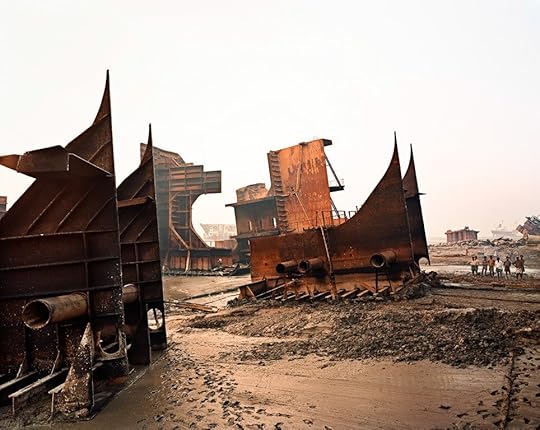
Photograph: Shipbreaking #9A, Chittagong, Bangladesh by Edward Burtynsky
4. In the US a Reckoning for Three Key Industries Escalates Dramatically in 2021The first significant scaled disruption of the three industries (Education, Finance and Healthcare) that account for over a third of US GDP. This is due to a perfect storm of new behaviors and expectations ( post Covid Experience Mindsets) combined with the rise of Third Connected Age Technologies ( AI, 5G, Cloud and Voice/AR/VR.)
These three massive industries suck in significant capital and assets and are so friction filled and rent seeking that post Covid they will be wracked, with some companies wrecked by change.
Education with 7% of GDP whose inner emptiness has been seen by parents and students in real time as the classes came home and the pedagogy was found wanting especially given the sums being sucked from payers !
Finance that accounts for 8% of GDP whose friction-filled ways and fee grabbing for no clear benefit (in many cases there is a clear benefit but in many there is not) will be hacked by new upstarts, increased transparency and a generation of inheritors who have grown up with Free Trading, Digital Mindsets and Robo-Everything.
Health Care (18% GDP) whose sphaghettiness of complexity and tortoise speed process– where for every 1 doctor, there are 6 supporting health care workers but TEN administrators–will meet an overstretched government and populace who realize with the Covid Vaccines that a bit of urgency and focused incentives can accelerate progress!
Great wealth and power creation and destruction will ensue all over the world. And it will be a key to politics. Just see what happened to Ant Financial earlier this month which was going to be the largest IPO in the world and was personally pulled by President Xi ( it was not just because of a critical speech by Jack Ma.)
Finance, health, education are intertwined into the fabric of society as they twist into new shapes so will a lot more of the landscape, politics and culture around us.
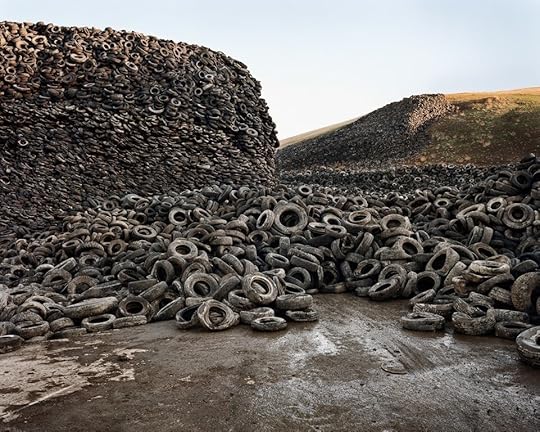
Photograph: Oxford Tire Pile #5, Westley, California 1999 by Edward Burtnysky
5. Global Warming/Climate Change/Environment in a Connected World.It is not surprising that President-Elect Biden has placed a person of John Kerry’s stature to oversee the United States initiatives on climate and made it a national security level job. In China, President Xi watches and monitors the smog in Beijing and hotels in New Delhi, India which often has the worst pollution of any major city post air quality signs in the lobby to let you know if it is safe to step outside.
Denying climate change is like denying gravity. It does not matter what we “think” for just like if we reject gravity, it will not prevent us from becoming a symphony of broken bones and goo if we step out of a multi-storied building to broadcast our “beliefs. “
Science is reality.
Science does not care what you or me or a dog named Boo thinks or what our mind-corroding social media feed projectile vomits at us.
Everywhere I “Zoom” these days it is heartening to see Business and their Boards/ CEO’s take a leadership role on all forms of Sustainability . They do this not only because it is the right thing to do but because without it no “Purpose Mantra” rings true and as importantly their customers and their employees demand it. Big investment firms like BlackRock monitor it.
The climate is interrelated with everything including mass migration of people.
We can expect over the next decade protecting the climate will be a part of all major political, economic and social discussions, as we move beyond “if” it is a challenge to “how and what” to do as the globe to address it.
Modern Science at speed has shown us a light at the end of the Covid tunnel with 2 and possibly 3 vaccines showing 90% efficacy.
If 2020 is known as the year of Covid and its impact, I believe 2021 will be the year of the Vaccine Drive and its impact.
The logistical, political, ethical, economical and societal effects of the next year will be dramatic.
For instance:

Photo: Deda Chicken Processing Plant, Dehui City, Jilin, China, 2005 by Edward Burtynsky
1) Which countries get access and which populations in a country get access first? Is a European life worth more than an African life? What happens when people of means who got covid-tests on demand ensure they and their families jump the line to get vaccines?
2) Will businesses insist that all employees get a certificate of vaccination before they can return to work? Will employees sue about this interference in their health? Will a cottage Industry of fake certifications like fake driving licenses arise? What if the star employee insists on working primarily from home even after vaccine because they have realized that in a distributed world demand for their skills is global.
3) What happens when side effects of the vaccine are weaponized against vaccinations on social media? What happens with regard to adulterated vaccines?
Never before has anyone dealt with anything like this.
Seven Billion people around the world. Multiple vaccines. A Chinese vaccine. A Russian vaccine. The biggest producer of vaccines is in India, but they produce for the world. Will the Indian Government “nationalize” the output of production for their own people?
The Reason to be Optimistic.The scale of these changes may want you hit pause and to step out of these raging waters.Change can be scary, but History provides a hopeful plot to the twists in the River
If one looks back at the world 20, 40 or 60 years ago most people would rather be alive today.
Despite all the challenges and tragedies, the world is better off for humanity as a whole (though there are winners and losers.)
Change is nothing but questions seeking and pointing the way to the answer.
And the river of change will feed the tide of growth and the current of life!
If you enjoyed this post please join thousands of others and subscribe to my free weekly thought letter at rishad.substack.com and get posts like this every Sunday.



